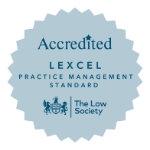Warranty and Indemnity Insurance, commonly referred to as W&I insurance, is often used in private mergers and acquisitions (M&A) to cover financial loss, that may arise from a breach of the seller’s warranties in a sale purchase agreement.
Historically, W&I Insurance was a niche market and targeted at private equity investors. However, recent market trends are seeing it used in a range of company sales, including SMEs, to ease lengthy and costly negotiations, and give both the buyer and seller a positive outcome.
What are the Benefits of W&I Insurance?
Negotiation of warranties, disclosure and seller limitations can be a costly and sometimes insurmountable process. The key benefits of W&I Insurance for the seller include the possibility to cap its liability at nil, or at least a lower amount than would otherwise have been possible, enabling a cleaner exit. It is also considered a favourable alternative to price reductions, specific indemnities with escrow arrangements or parent guarantees. For the buyer, it can claim directly against the insurer and can potentially negotiate an enhanced scope and duration of protection. It is also a helpful alternative to a confrontational negotiation of warranties if the parties need to maintain a commercial relationship in the future.
What are the Disadvantages of W&I Insurance?
The insurance cover offered tends to exclude the following: known or disclosed facts, losses arising from fraud and certain specific liabilities such as money laundering and environmental. There is also the timing issue of involving the insurer early on in the transaction followed by the co-ordination of an additional third party in the due diligence process and review of the sale purchase agreement. Finally, the cost of the insurance premium will need to be paid. Currently, the premium seems to be around 1 to 2% of the maximum liability covered by the insurance policy.
Who Tends to Arrange W&I Insurance Cover?
W&I insurance is predominantly used on share deals and arranged by the buyer However, this does not mean that the buyers always pick up the price of the premium, which is a point of negotiation for parties to the transaction.
How Common is W&I Insurance?
The use of W&I Insurance has grown considerably for the last five years, particularly in M&A deals involving SMEs and those not involving any private equity party. The growing consensus of city firms is that the use of W&I Insurance is around 20% in private M&A deals and 40% in private equity deals.
So what Could be Fuelling this Increased Activity?
A key reason has to be cost of the W&I Insurance cover. The number of insurers offering W&I insurance has increased, driving competition between insurers and therefore making the policies more affordable and efficient, with the scope of policies offering more comprehensive and wider cover.
What is the Future of W&I Insurance in M&A Deals?
It seems clear that W&I insurance is behind some fundamental developments in deal structure. Its increased use will inevitably reduce the use of escrows and create more nil seller recourse structures. However, as more policies are created, there is a following trend of increased W&I claims which may in turn raise the premium rates of W&I Insurance reducing its appeal.
If you would be interested in discussing the benefits of W&I Insurance for your company sale then please feel free to contact the Commercial & Corporate department at Lanyon Bowdler.
"*" indicates required fields

 Back
Back
















